Table of Contents
A. J. Parkes & Co, Brisbane
This story is condensed fromthe book ”A Centenary History 1886-1996 A. J. Parkes & Company Pty. Ltd” by Bryan Jamison.
Arthur James Parkes was born in 1866 in West Bromich, England which is only 10.5 kilometres from Birmingham. Here is the exert of the 1851 census listing Arthur, his parents and baby sister.

Sometime between 1873 and 1876 the family moved to Lodge road, Birmingham. In the 1861 census, three more siblings have been born. Arthur, aged 13, is listed as a scholar. He was apprenticed as a die-sinker to the Royal Mint in London in the 1880s. In 1889 he travelled to Australia in the ship Ormuz.

Detail from passenger listing.
It is not known when or why he came to Queensland, but the first record is of him living at Rocbourne Terrace, Paddington, and described as a die sinker. By 1896 he was listed as a die sinker and engraver at 191 Adelaide Street, Brisbane.
The oldest surviving medallion produced by the firm dates to 1897. They produced many fine medallions for sporting clubs, etc, but metal railway tokens and union badges were important day to day work. Government contracts for button and badges during the Boer War, WW1 and WW2 provided important business. In fact, they had to move to larger premises in 1915 due to the volume of work.
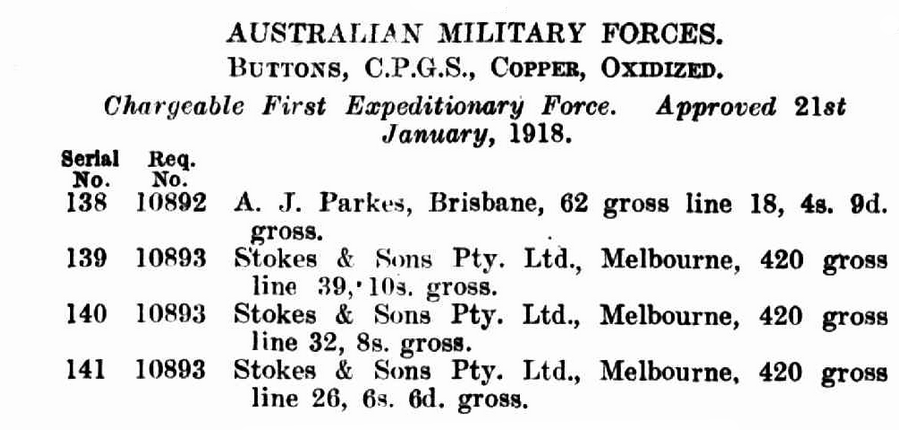
Commonwealth of Australia Gazette, 31st January 1918 page . contact for buttons with Parkes and Stokes.
The company stagnated in the inter-war period. In the late 1930s the firm consisted of only Arthur and his son James Henry Brisbane Parkes (Harry, 1896-1958).
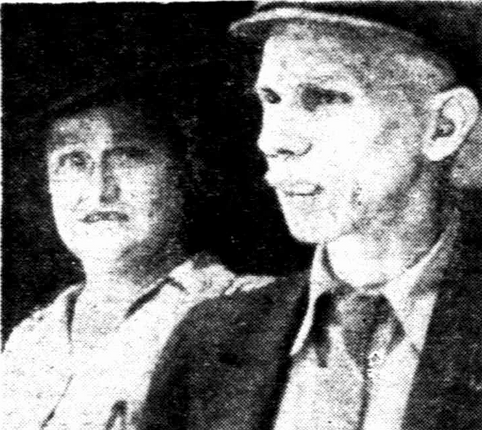
Truth (Brisbane), 23rd January 1949 page 14. This photo was labelled as showing Mrs Elsie May Parkes. Presumably the man is her husband, Harry Parkes, as both were witnesses at an inquest being reported on.
In 1941 he put the firm up for sale, and enjoyed retirement for the last 9 years of his life.
Eric Edwards Faux borrowed heavily to buy the firm in 1941. He was an English born jeweler who had come to Queensland as a child in 1913. He kept the name because the firm had built up a reputation for quality work. The firm required modernisation, and came with the burden of Harry Parkes, who was quite eccentric and unreliable, and repeatedly sacked! However, all the old armed forces dies and tools were intact. This allowed Mr Faux to tender for button and badge production during WW2. Due to increased demand, the firm moved to 454 George Street in the early 1940s, then back to Gregory Terrace in 1947.
In 1948 A. J. Parkes became a registered private company. Enamel and plastic badges were a big part of the business. In 1961 the company moved to Salisbury and built a new factory. Eric’s sons, Edgar and Clive joined the firm, eventually becoming Chief Executive Office and Production Manager respectively. After a sixty year hiatus, they returned to medallion production.
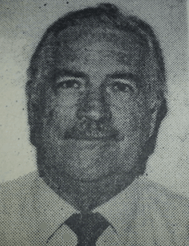
Clive William Lambert Faux (1936-2012)
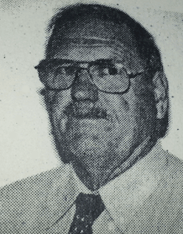
Edgar Eric Faux
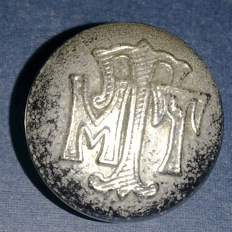
SA Municipal Tramways Trust.
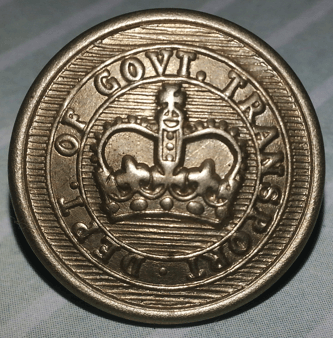
NSW Department of Government Transport.
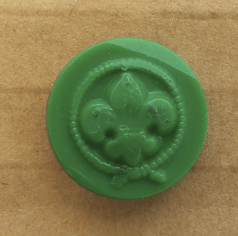
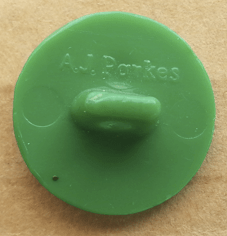
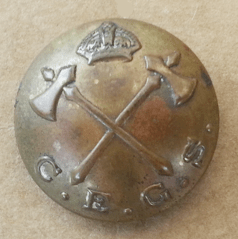
Church of England Grammar School Cadets
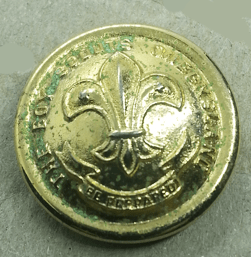
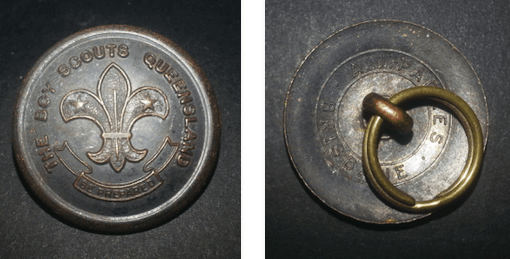
The Boy Scouts Queensland.
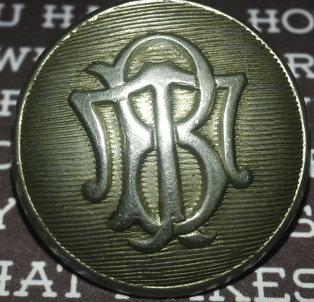
Brisbane Tramways.
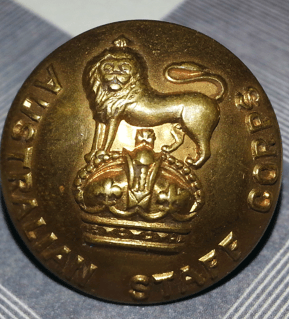
Australian Staff Corps.
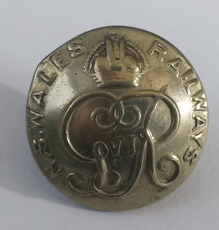
NSW Railways, GV1 cypher
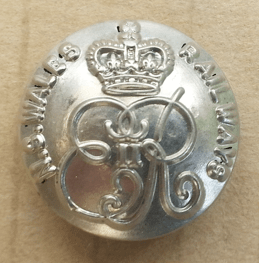
NSW Railways EIIR cypher
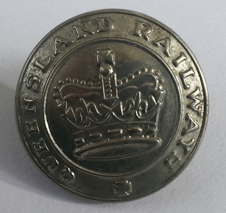
Queensland Railways Queen’s crown
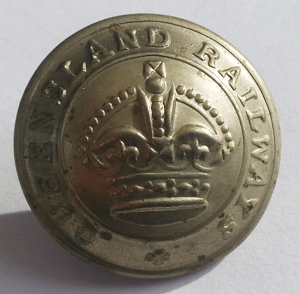
Queensland Railways King’s crown
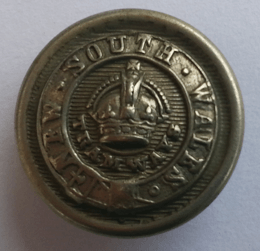
NSW Tramways King’s crown
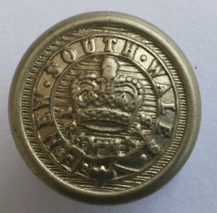
NSW Tramways Queen’s crown
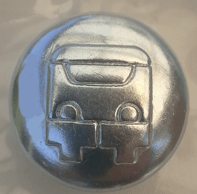
Bus Association of SA

State Transit Austhoity SA 1974-94
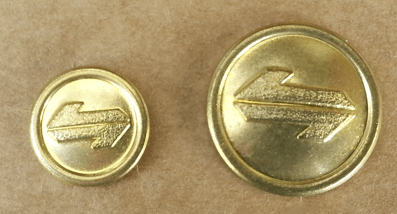
CityRail
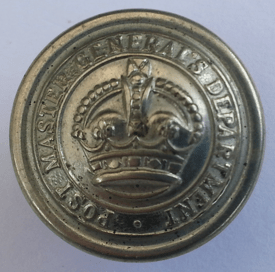
Post Master-General’s Department
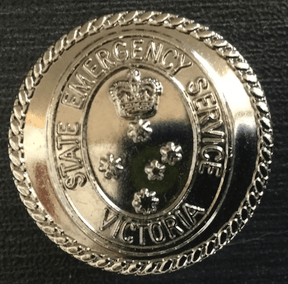
State Emergency Service Victoria.
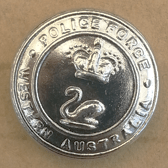
WA Police Force
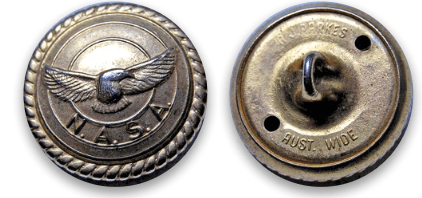
N. A. S. A. Parkes Australia wide
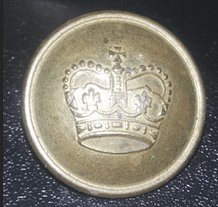
?Queensland Government department.
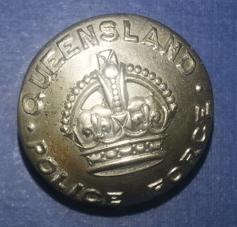
Queensland Police Force.
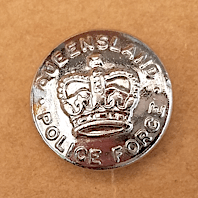
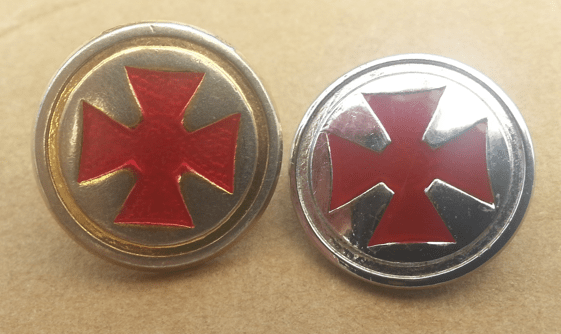
Queensland Ambulance
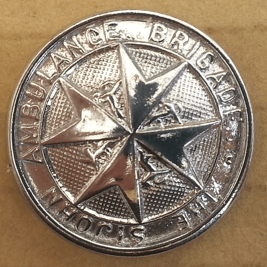
St John Ambulance
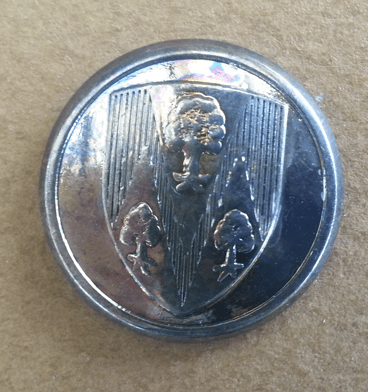
unknown company
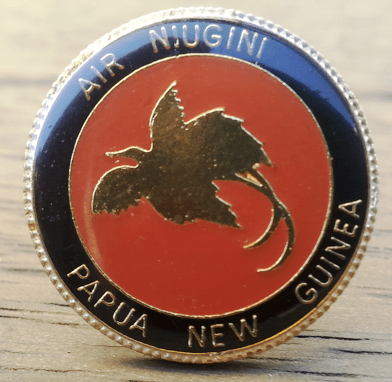
Air Niugini
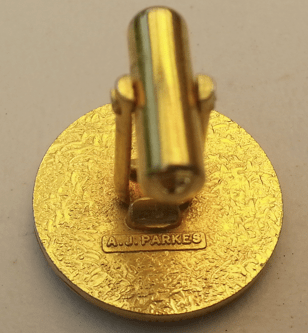
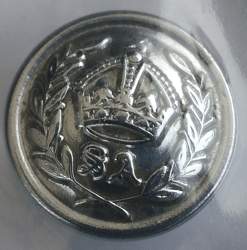
SA Police King’s crown
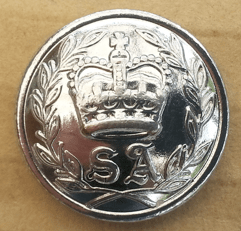
SA Police QEII crown
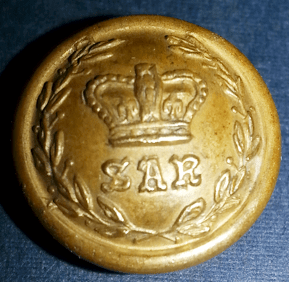
South Australian Railways, QV crown.
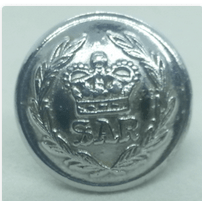
South Australian Railways, QEII crown.
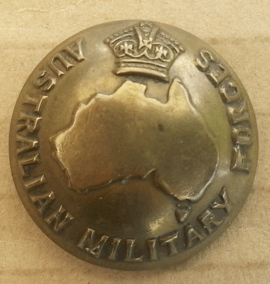
AMF
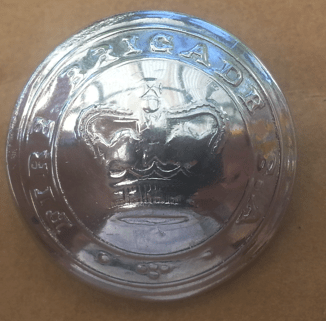
SA Fire Brigade
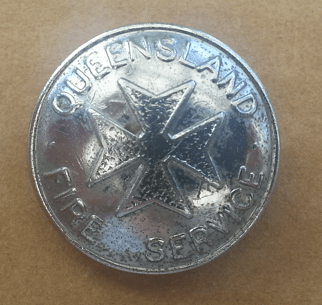
Queensland Fire Service

Protective Service Officer, Victoria
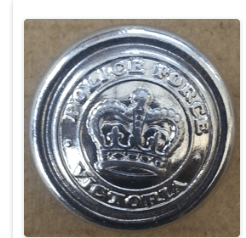
Victorian Police Force
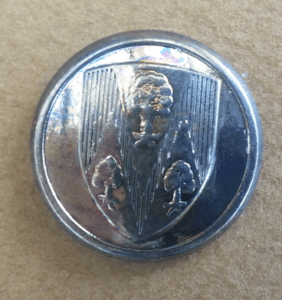
unknown company
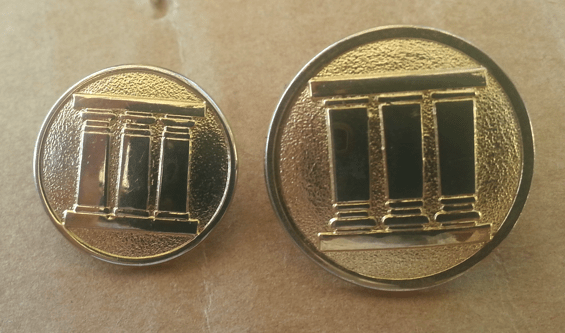
Security Group III
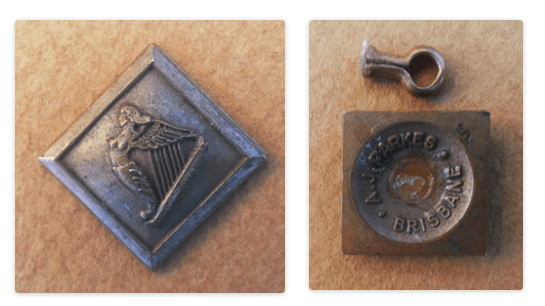
Irish Pipe Band
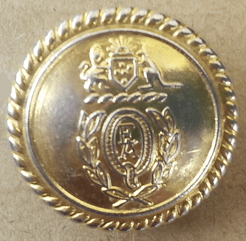
Qantas Empire Airways
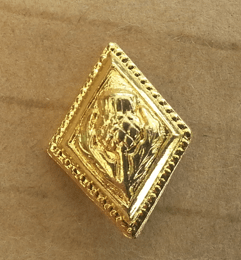
Gilt Pipe band

NSW Commissionaire Corps. The button has the 2 “air holes” on the back, dating from approx 1953 onwards.
Amor
See ‘W. Amor’ below
Austral Pearl Stud Company
This company only advertised from 1889-90. The Fink’s Building was built on the corner of Flinders and Elizabeth Streets in 1880. A fire destroyed it in 1897. The building was rebuilt, but finally demolished.

The Age, 18th July 1889
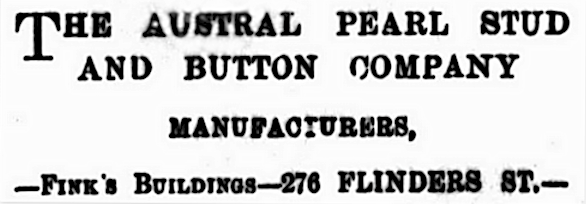
Jewish Herald, 20th December 1889 page 16.
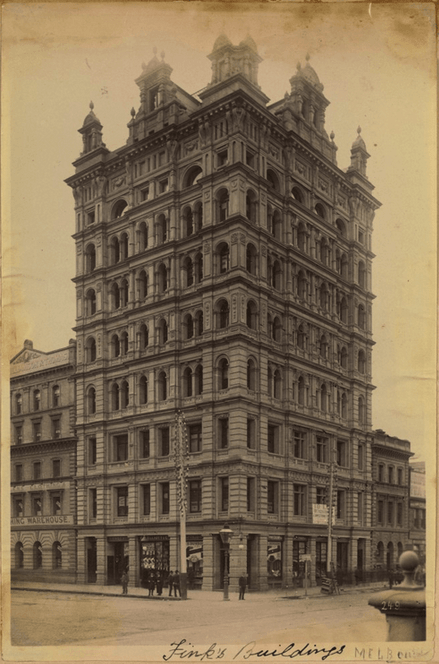
From State Library of Victoria collection. #H2001.60/32 https://viewer.slv.vic.gov.au/?entity=IE1338641&mode=browse
Bridgland & King, Melbourne
See also ‘P.J. King’ below.
This company mainly produced badges and medallions, but also trpohies and at least one uniform button.
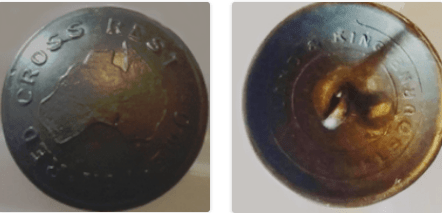
Backmark: Bridland & King
Cole Bentley & Son, Melbourne
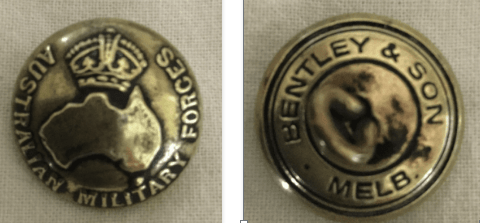
AMF :Bentley & Son Melb.
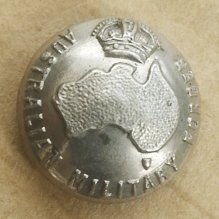
AMF: Bentley Melb.
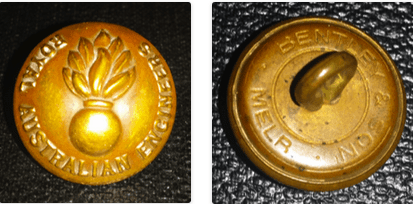
Royal Australian Engineers
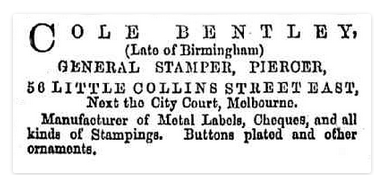
Jewish Herald, 18th November 1881 page 13.
Mr (Isaac) Cole Bentley was originally from Birmingham. He had worked for Thomas Stokes as a stamper, before running the firm of Bentley & Son ,from around 1880 until his death in 1928. In 1892 the firm moved from Little Collins Street to 295 Little Lonsdale Street.
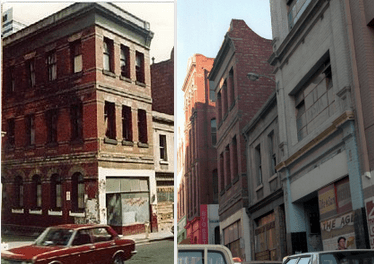
2 views of 295 Lt Lonsdale St, since demolished. In the right photo it’s the middle building. I cannot confirm when this 3 story factory was built. https://vhd.heritagecouncil.vic.gov.au/places/65257 https://www.flickr.com/photos/7849945@N02/25716171330/

Commonwealth Gazette, 20th November 1930 p 2284. G.P.G.S. stands for Commonwealth Pattern, General Service.

Commonwealth Gazette, 27th August 1931, page 1400.
The firm had moved again to 22 Little Bourke Street by 1932. His son, Harry Cole James Bentley, continued the business after his father’s death until he sold up upon receiving a military commission.
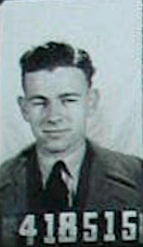
Photo from Harry Bentley’s RAAF file in the National Archives.
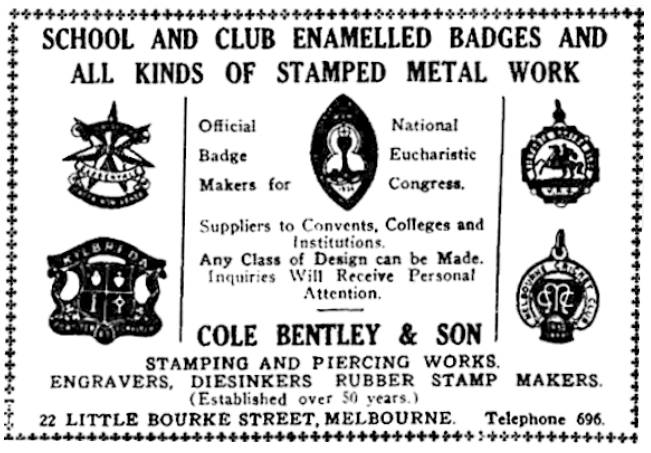
Advocate (Melbourne), 17th January 1935.
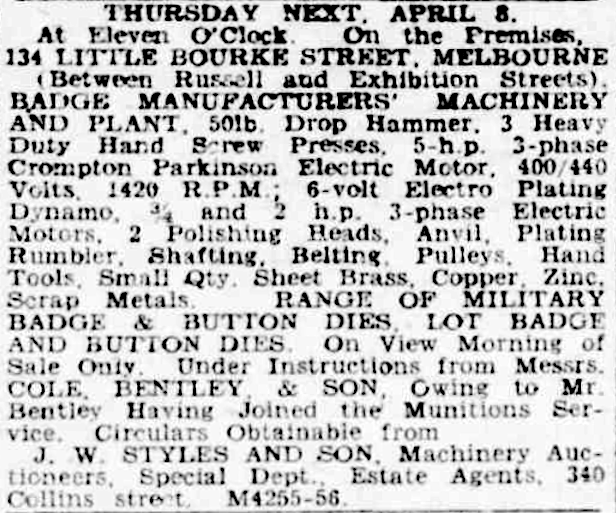
The Argus, 3rd April 1943 page 14.
D. Schmidt, Adelaide
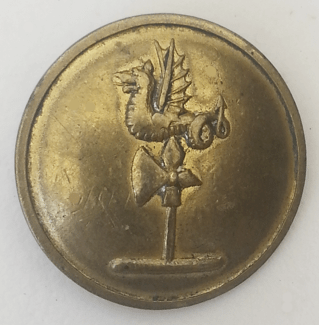
Backmark: D. Schmidt Adelaide
Diedrich Schmidt (1838-1897) was a Bremmen born engraver who came to Melbourne in 1859, then moved to Adelaide in 1867. Salis Schlank made some medals in association with him; apparently he also made at least this button with Schlank.
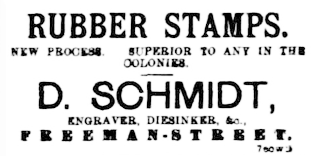
The Advertiser (Adelaide), 7th April 1892 page 7.
F. Burmeister, Adelaide
A button for the South Australian Volunteers c.1860-70 was auctioned on the auction website, Noble Numismatics Pty. Ltd. backmarked ‘F. Burmeister Maker’.
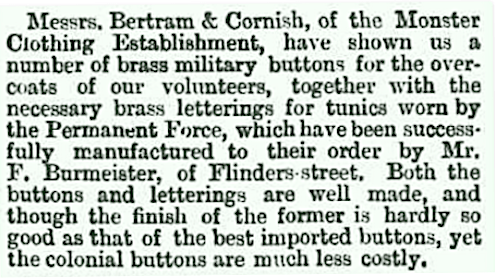
The Express and Telegraph on 10th October 1885 page 3.
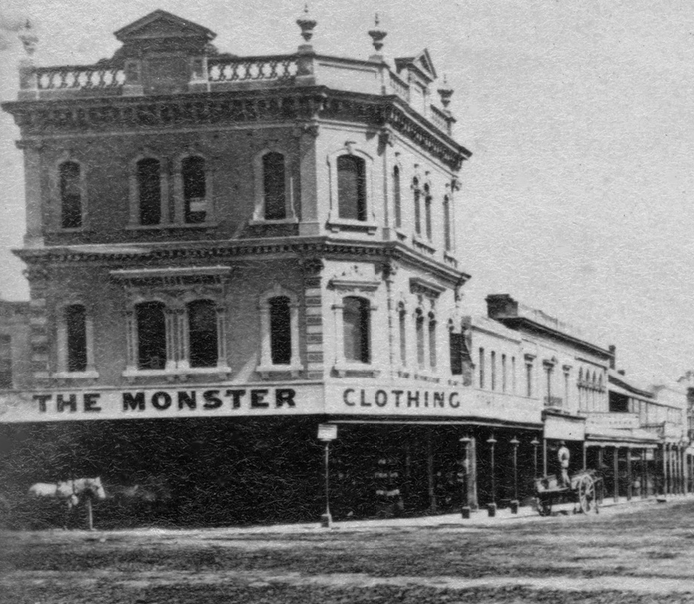
State Library of south Australia https://collections.slsa.sa.gov.au/resource/B+62412/2
In 1884 Bertram & Cornish had bought the ‘Monster Clothing Establishment’ from G. & R. Wills and Company, who were major softgoods wholesalers in Adelaide from 1849. Frederick Frances Burmeister started as an engraver around 1879 in Adelaide, later adding printing to his business. He was born in Norwood, South Australia in 1858 and died in 1929. He was an exhibited artist and had been involved with with the “first coloured moving picture in the world” that toured South Australian towns in 1895.
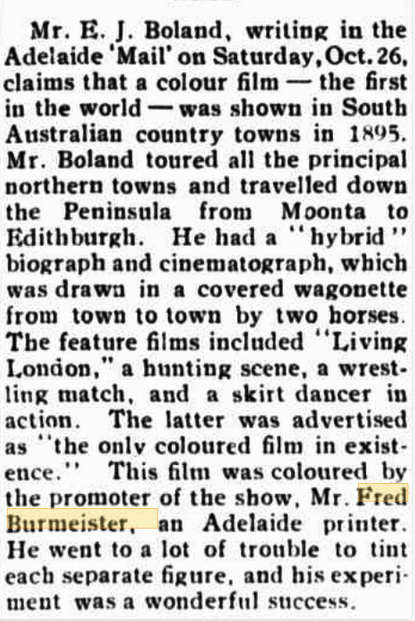
The Pioneer, 8th November 1940 page 7.
G. A. Miller, Sydney
Gustav Adolph Carlberg (Miller), despite being quoted by the company he started as Swedish born, was actually born in Sydney in 1879 to Swedish parents. He was apprenticed to W. J. Amor (see below) before joining a Mr Morris in 1900 in partnership as badge and medallion makers, ‘Miller and Morris’, which became ‘Miller and Sons’ circa 1914.
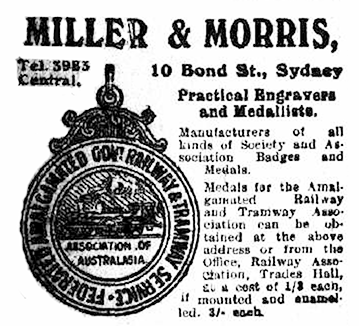
Co-operator (Sydney), 2nd May 1912 page 8.
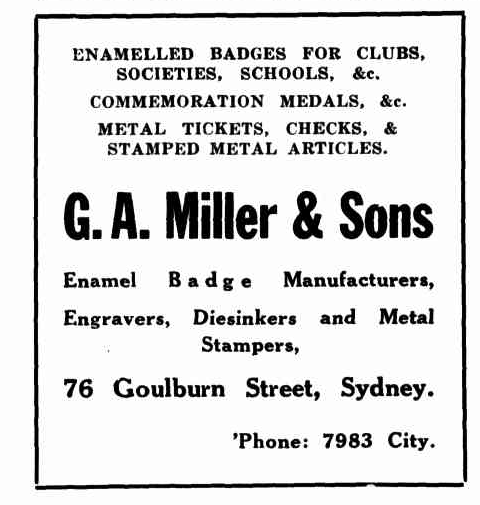
The Record of the Blue Mountains (Katoomba, NSW), 1st February 1924 page 27.
A tender was accepted in 1906 by them to supply military uniform buttons. Gustav died in Sydney on the 9th January 1947. The firm became G. A. Millers and Sons P/L circa 1920. The firm was in liquidation in 1973, but continues today as GA Millers.
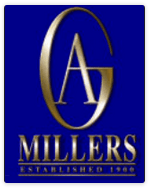
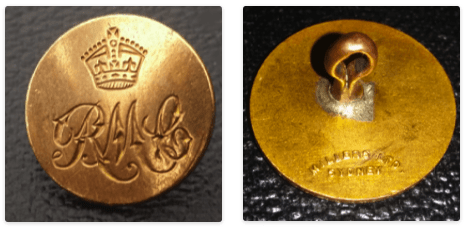
Royal Military College, Duntroon
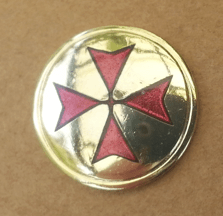
Millers Ltd.
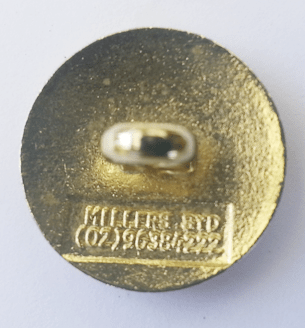
James McBean & Son, Melbourne
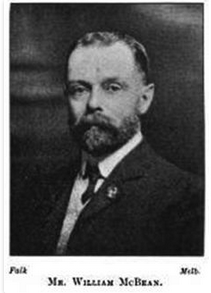
James McBean & Son, Melbourne, were primarily retailers but also produced their own jewellery, their mark being ‘J.McB & SON’. (The article below was reproduced in a silversmith website but originated in 1904.) The business was sold in 1927.
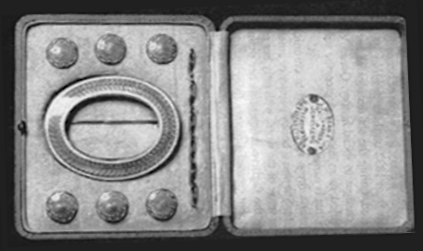
“This well known firm was established in 1858 by Mr James McBean, the father of the present proprietor. Mr McBean who is still living, is one of the oldest identities in Melbourne, and was actively engaged in business until 1890, a period of forty years. During that time, although he took no part in public matters, the name of McBean became well and favourably known over almost all of Australasia, and the firm has a splendid reputation, not only in Victoria, but in the other States. Mr. JAMES McBEAN was born in Inverness, Scotland, in the year 1833. He served his apprenticeship as a watchmaker and jeweller in his native town, and then determined to seek his fortune in Australia. On arriving in Melbourne he saw the immense possibilities which awaited the jewellery trade, and established himself in his old business in premises directly opposite the present establishment in Elizabeth Street, on the site now occupied by Messrs McLean Brothers & Rigg. Commencing on a very modest scale, Mr McBean gradually worked up a splendid connection. Business rapidly increased and it became necessary to remove to larger premises. Since 1894 operations have been carried on in the splendidly situated establishment in ‘The Block’, Elizabeth Street. The large and elegantly fitted shop, with its two spacious window frontages, one facing Elizabeth Street, and the other ‘The Block’, is one of the sights of Melbourne. A most noticeable feature is the splendid assortment of high-class articles, representing the most artistic efforts of the gold and silversmiths’ art, which are displayed with lavish profusion. A large quantity of the jewellery is manufactured by the firm, and compares very favourably with anything which can be turned out in England. In 1890 Mr. James McBean retired and handed over the business to his son, Mr William McBean who had been associated with him for twenty years. The thorough and practical training which he received during that time has proved of great benefit, both to himself and his clients. An Inspection of the superior class of stock and its great variety will convince anyone that the present proprietor is bent on maintaining the old traditions of the house, and also in keeping well abreast of the times. Mr. WILLIAM McBEAN was born in Melbourne in 1858, and, although only forty-three years of age, has been in the trade for thirty-two years, having acquired a thorough knowledge of every branch of the business. Although a very busy man, Mr. McBean finds time to devote a good deal of time and energy to the interests of the Melbourne Cricket Club. He has been a valued member of the committee for five years, and was also one of the committee of management who had the English team of 1901 in hand.”
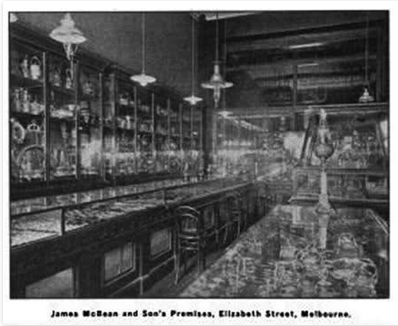
Source: The Cyclopedia of Victoria: An Historical and Commercial Review, Descriptive and Biographical, Facts, Figures and Illustrations : An Epitome of Progress. – Volume 2 – 1904

The Argus, 12th July 1894 page 1.
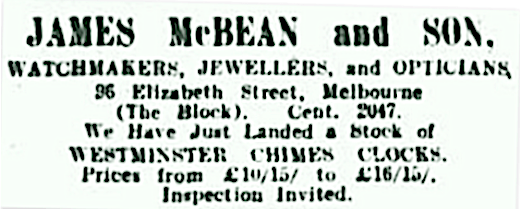
The Argus, 19th June 1925 page 14.
G. W. N. Hamilton, Melbourne
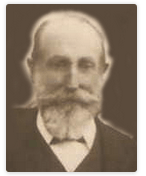
The Herald (Fremantle) 3rd December 1881 page 3.
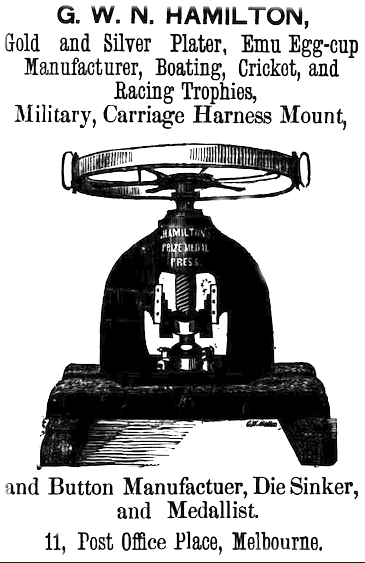
The Herald (Fremantle) 3rd December 1881 page 5.
George William Nathaniel Hamilton (1848-1931) was born in Dublin. He was known for his Emu Egg trophies. He was in partnership with Edmond Soutter from around 1873-1877 and advertised as above from 1878-1881. Has anyone any example of his buttons?
Kangaroo Office, Melbourne
In 1854 the first private mint in Australia was set up in Franklin Street West, Melbourne, by some British entrepreneurs headed by William Joseph Taylor. Unfortunately it was a business failure. The gentleman running the business for them in Melbourne, Thomas Scaife, produced copper tokens as well as medals in an attempt to salvage the venture.

He left the colony in 1859, having sold the coin and button press to Thomas Stokes in 1857. A photo of the press can be seen on the “Stokes & Sons” page of this blog.
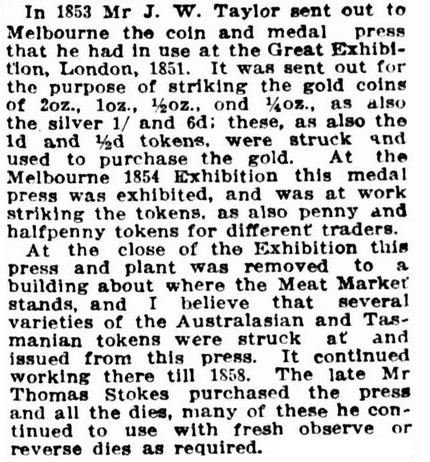
The Herald (Melbourne), 23rd January 1915, page 3. How the press came to Australia. Mr Taylor’s business partners were Mr Hodgkins and Mr Tyndall.
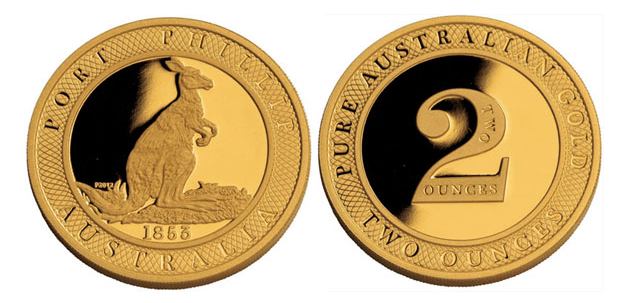
Replica Medallion: https://news.coinupdate.com/perth-mint-offers-ngc-certified-port-phillip-kangaroo-replica-gold-medallions-2092/
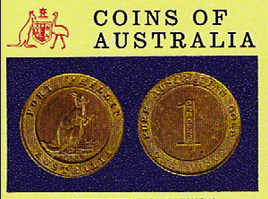
A Vita-Brits collectable card from the ‘Coins of Australia’ series. Strictly, this was not a coin but a weight, as it was labelled ‘1 ounce’.
The Queenslander newspaper series on Numismatic History in 1895 shed more light on the story, as the author had interviewed Thomas Scaife, one of the managers of this failed mint …
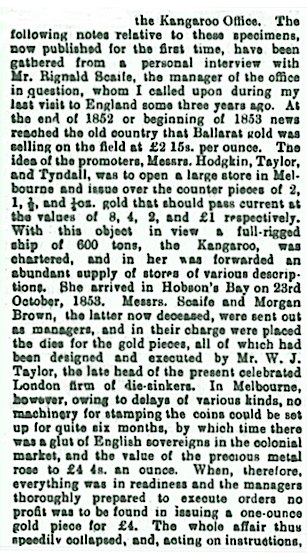
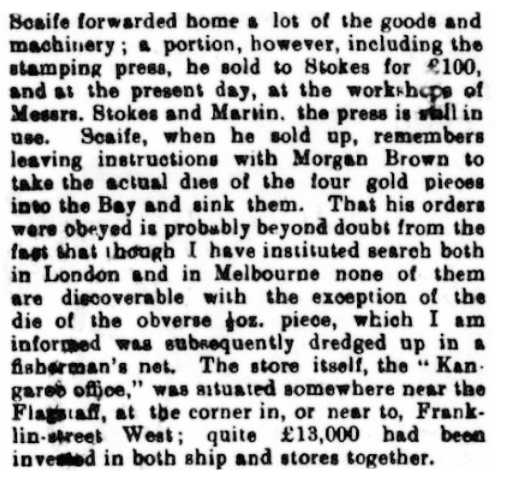
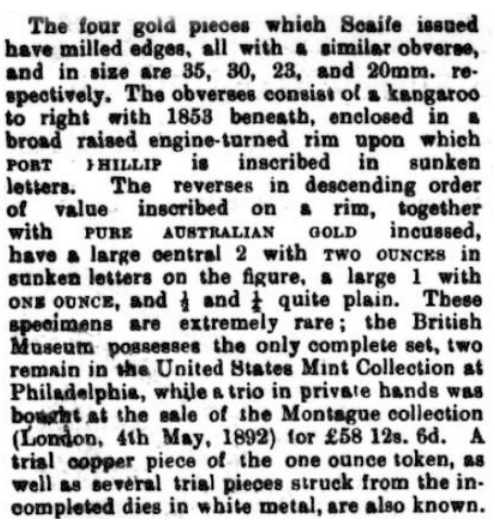
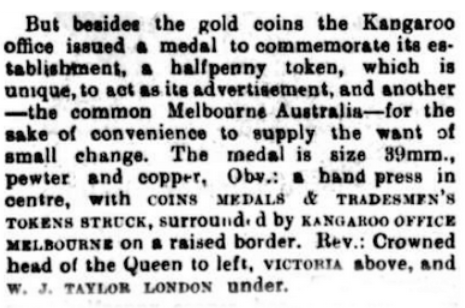
Despite the legend that the dies had been sunk in Port Phillip Bay, they turned up in the Stokes die store circa 1915, in a very rusty condition. They were donated by Stokes to the Public Library around 1934.
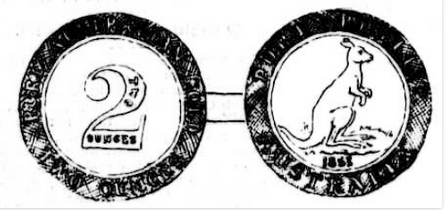
One of the ‘coins’.
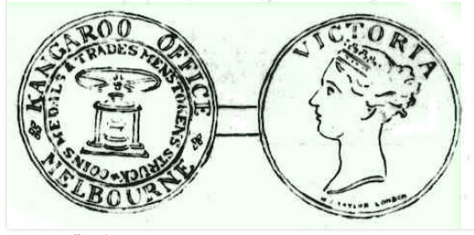
A Kangaroo Office token.
Millers Ltd.
See entry for G. A. Miller, Sydney.
Parsons, Thompson, and Co, Sydney
These were makers of horn and pearl buttons in Surry Hills.

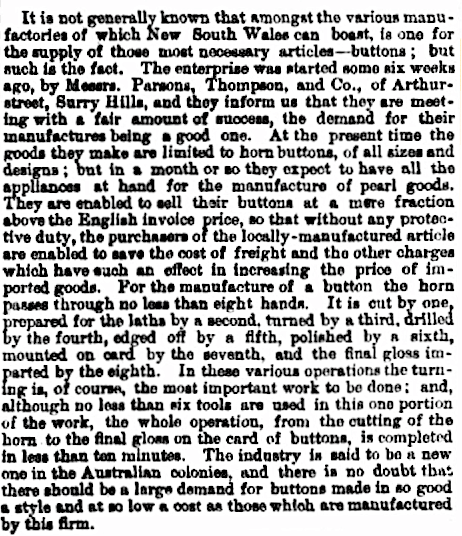
Sydney Morning Herald, 10th February 1881 page 8.
The Mr Parsons referred to was probably Charles Tilbury Parsons (1854-1927), a skilled wood worker and businessman who ran a mill in Sydney before moving to Gosford. Presumably after he left the firm was renamed as Messrs. Thompson & Co. Thompson was Mr George Simeon Thompson (1852-1938).

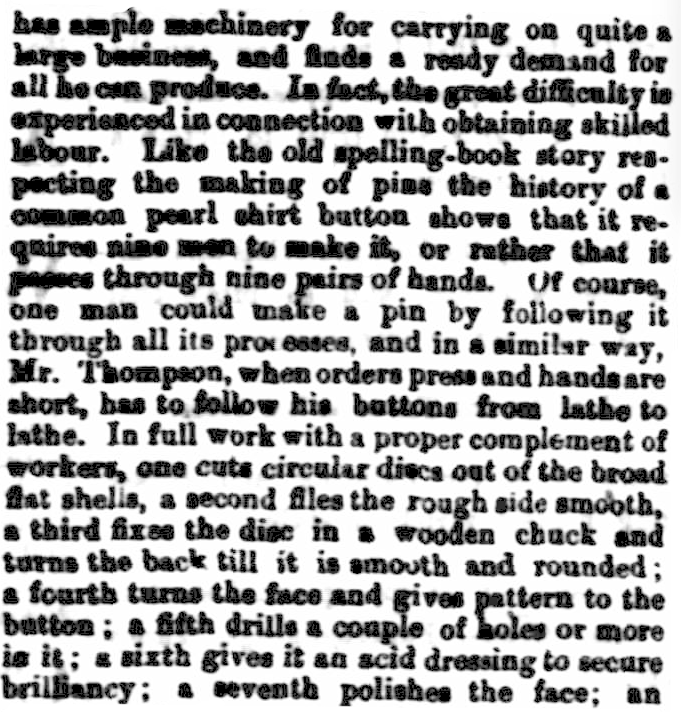
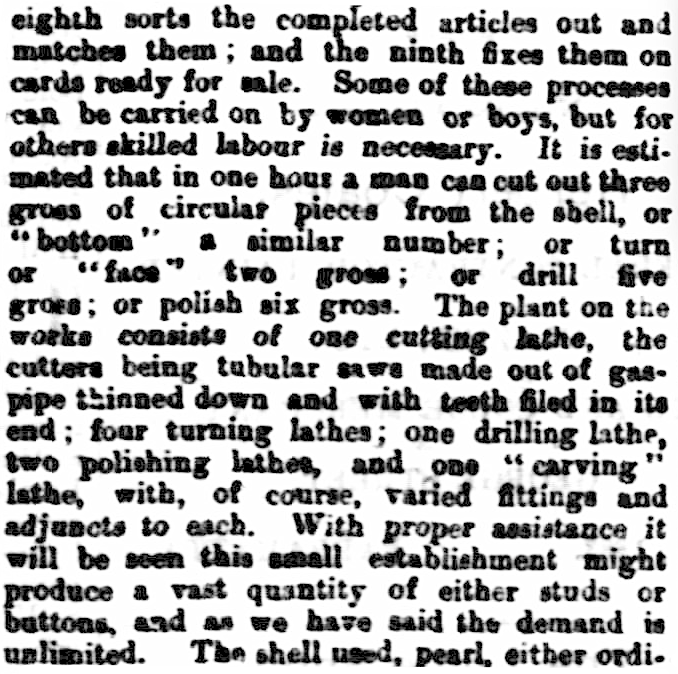
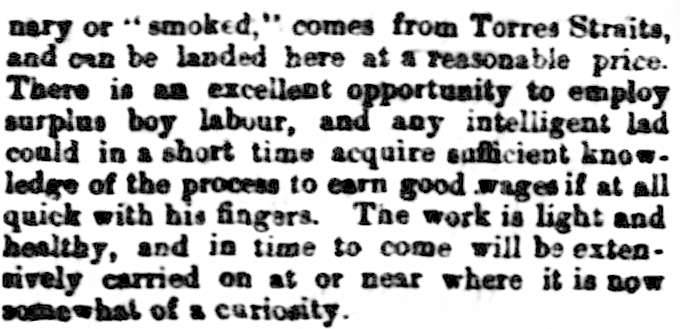
The Cumberland Mercury, 25th April 1885 page 8.
Mr George Simeon Thompson (1852-1938), formerly of Parson, Thompson & Co., had shifted from Surry Hills to Granville. However, he was only located there for some months, as later the same year he had moved back to Sydney. He must have continued for some years, as he was advertising his pearl shell studs and buttons in Melbourne in 1889.

Jewish Herald, 26th April 1889.
P. J. King Pty. Ltd., Melbourne
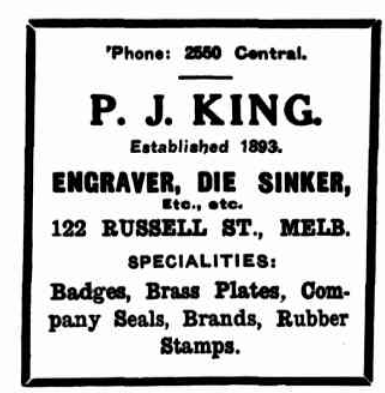
Daily Commercial News and Shipping List, 7th march 1923, page 1.
Percy John King (1870-1933) established a partnership with Charles Walter Bridgland in 1893 at 267 Little Collins Street. ‘Bridgland & King’ did engraving, die sinking and rubber stamp making. From 1899 Percy continued the business alone. A rival company started in Melbourne in 1903 using the name ‘Bridgland & King’ even though they were not associated with Percy.
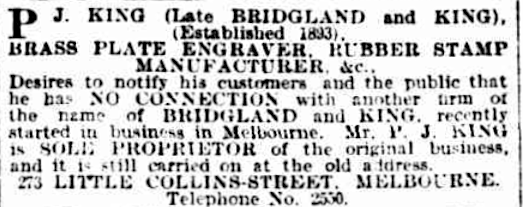
The Age, 8th August 1903 page 18.
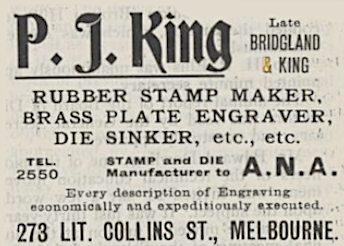
He was annoyed enough to advertise as “late Bridgland & King” from 1903-1906 in the Advance Australia magazine.

This button is backmarked ‘Bridgland and King’ and was probably made by the firm trading on Mr King’s good name.
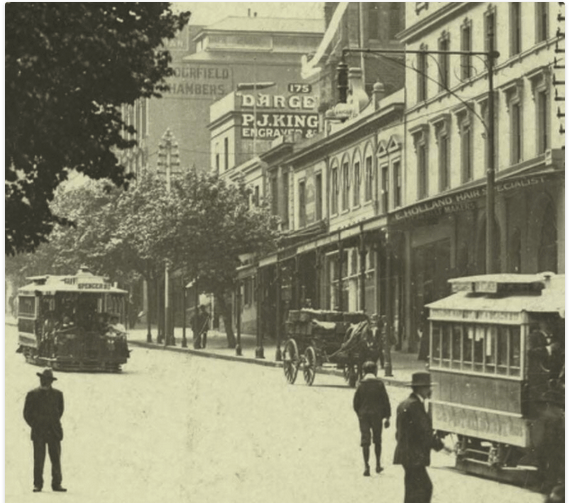
Detail from photo of Collins Street. https://catalogue.nla.gov.au/Record/1830358
Percy set up a new business, P. J. King Pty. Ltd., in 1928 with his son John Howard King. The company made uniform buttons (see below). Together with Brim Medallions, Wheelan’s Castings and Swan & Hudson, the company was amalgamated into J. J. Cash in the late 1980’s, and is now known as Cash’s Australia.
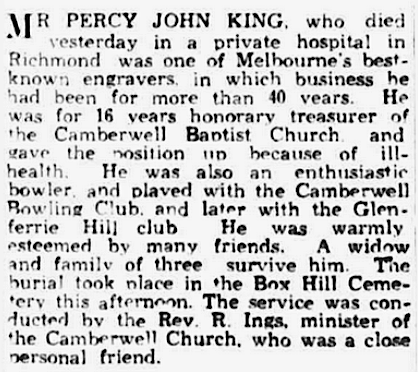
The Herald (Melbourne), 4th August 1933 page 7.
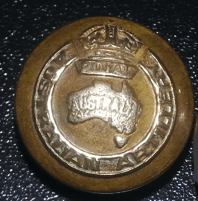
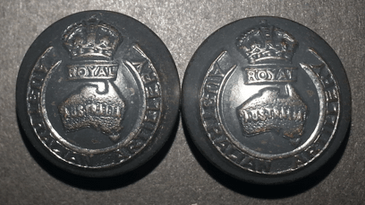
Royal Australian Artillery
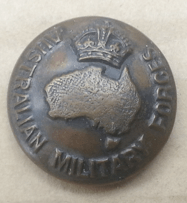
AMF
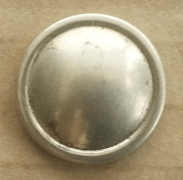
S. Schlank & Co. Ltd., Adelaide
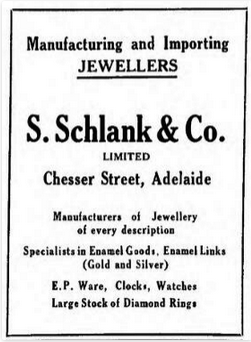
The Commonwealth Jeweller & Watchmaker, 1923.
Salis P. Schlank (a.k.a. Salis Schönlank) was a Prussian-Jewish jeweler who started his own company in 1887 from the Adelaide branch of a previous partnership (P. Falk & Co). The company was a leading medal and badge maker and remained with the Schlank family until 1969. It was then sold off to Olsen Badges in 1970.
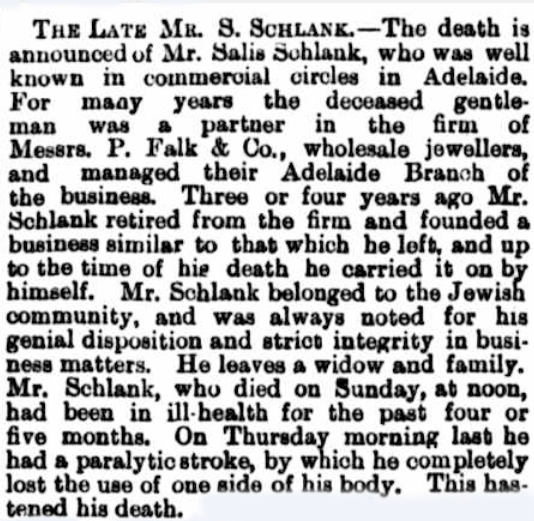
Adelaide Observer, 2nd July 1892 page 30.
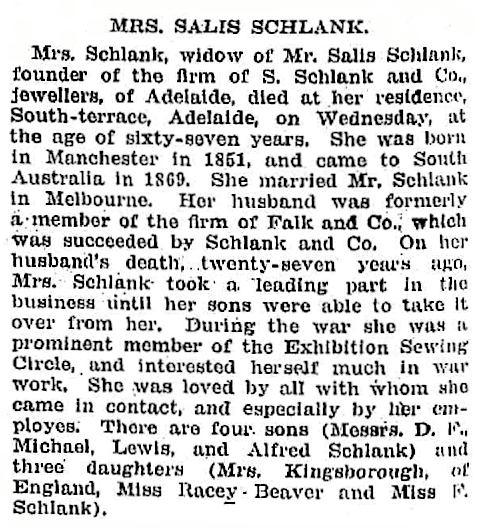
Jewish herald, 27th December 1918 page 10.
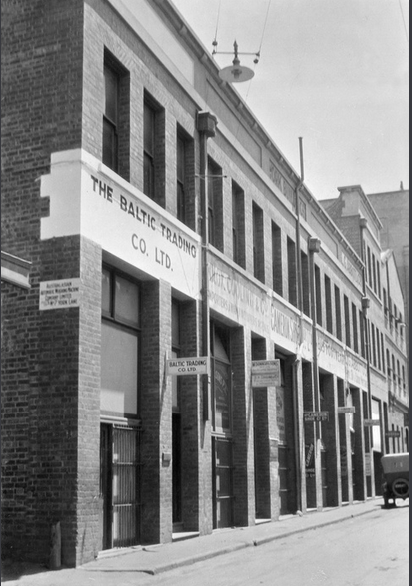
State Library SA image#B2035. Chesser St in 1924. The building at the extreme right is the Schlank’s jewellery factory.
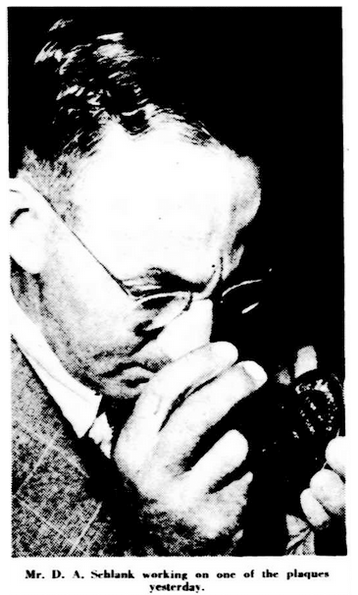
The Advertiser (Adelaide), 6 November 1952 page 10.
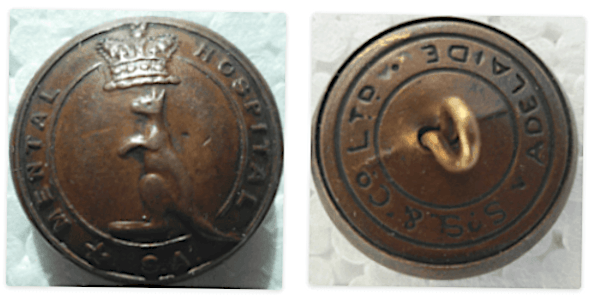
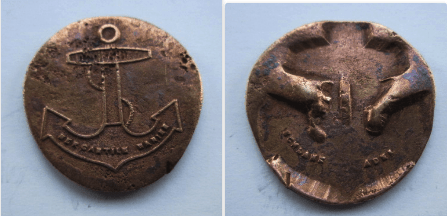
Mercantile Navy badge with pin missing?
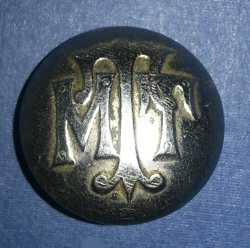
SA Municipal Tramway Trust
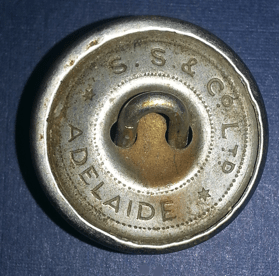
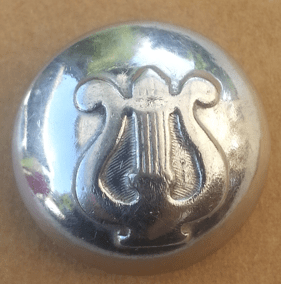
Adelaide College of Music
https://numismatics.org.au/wp-content/uploads/2021/06/Vol-23-Article-4.pdf
W. Barnard Melbourne
Cossum quotes a backmark for V.V.A.R. buttons as “W. Barnard Melbourne”. There was a William Barnard operating at 133 Little Bourke Street east from 1854-57 who was variously described as a working jeweller, a watchmaker, and a gilder. He was paid for striking medals in 1857, so he may have been a die-sinker as well (or else subcontracted it).
Willis & Sons Pty. Ltd., Melbourne & Sydney
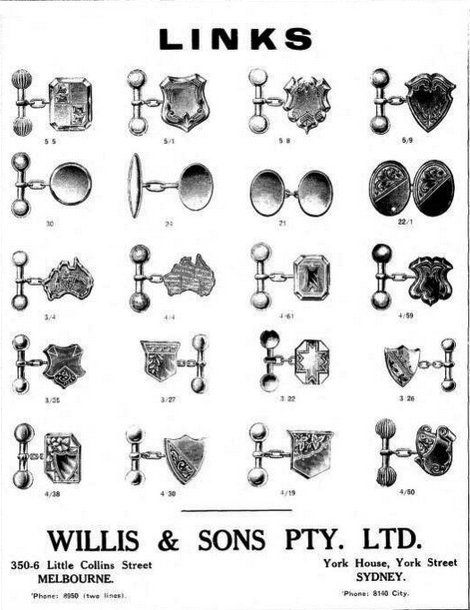
‘Commonwealth Jeweller and Watchmaker’ magazine, July 1923 page 11.
Brothers Richard and Thomas Willis arrived in Melbourne in 1858 and set up as importers and wholesalers, later extending to manufacturing of jewellery. Richard left the partnership, with the firm becoming T. Willis & co in 1875, changing to Willis & Sons in 1904. From 1931 they stopped manufacturing and reverted to importing. The firm was still going in 1951.
W. J. Amor, Sydney
William Joseph Amor (1860-1955) was a skilled English medalist and die engraver who established his business in Sydney in 1888.
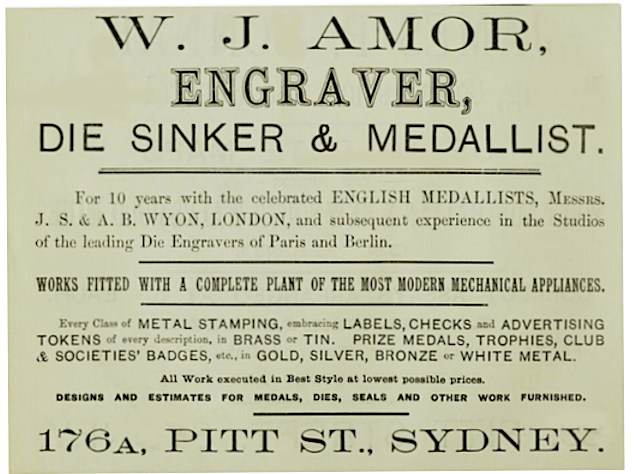
NSW Post Office Directory 1896-7.
It became a limited company in 1918.

Dun’s Gazette, 6th February 1918.
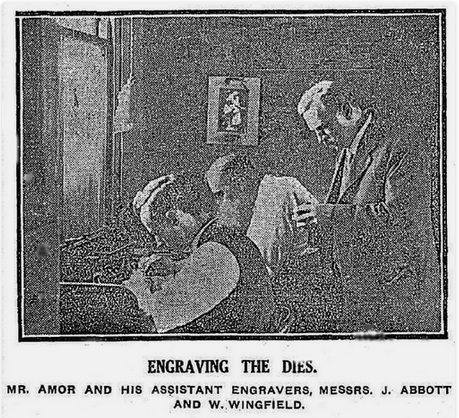
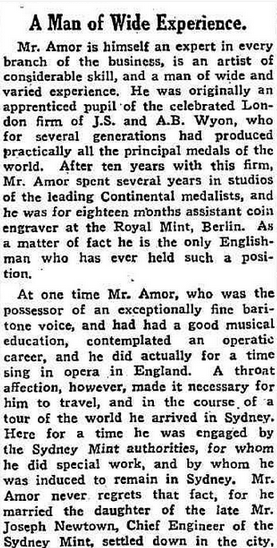
Extracted from an article published in the Sunday Times (Sydney), 11th May 1919 page 24.
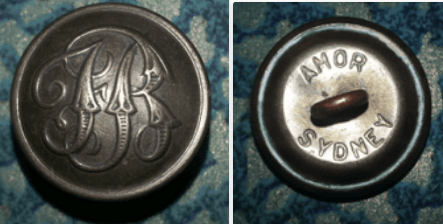
NSW Fire Brigade.
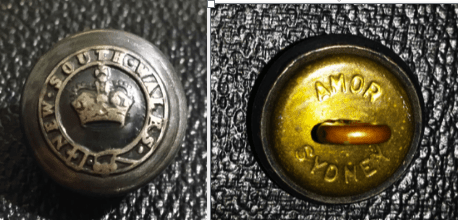
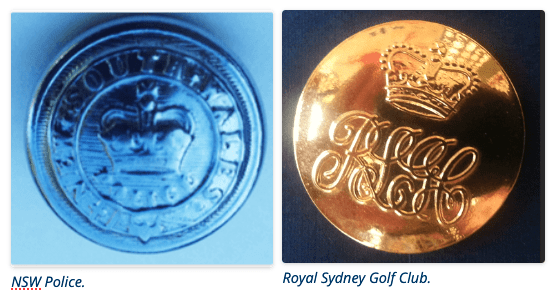
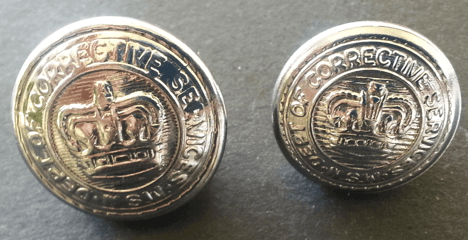
NSW Department of Correctional services.
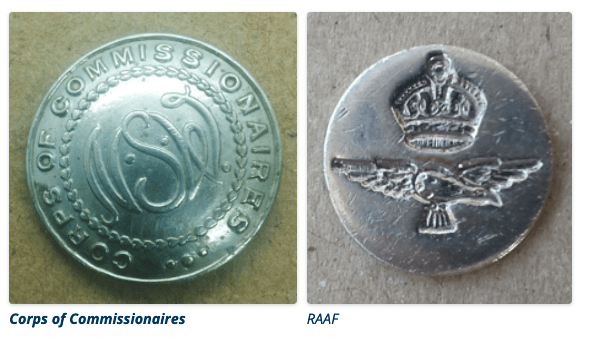
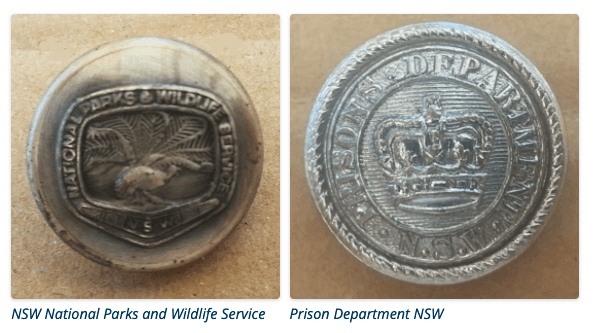
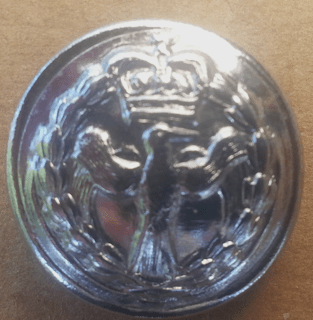
PNG police
In 1935 Amor sold his share to A.H. Byatt, remaining as an advisory director. In 1942 the business moved to Surry Hills, and was renamed Amor-Sanders after a merger in 1978. The firm was split in 1997, with Amor-Sanders liquidated in 2012 and badges still being made by Amor Badges Co. Pty. Ltd.
